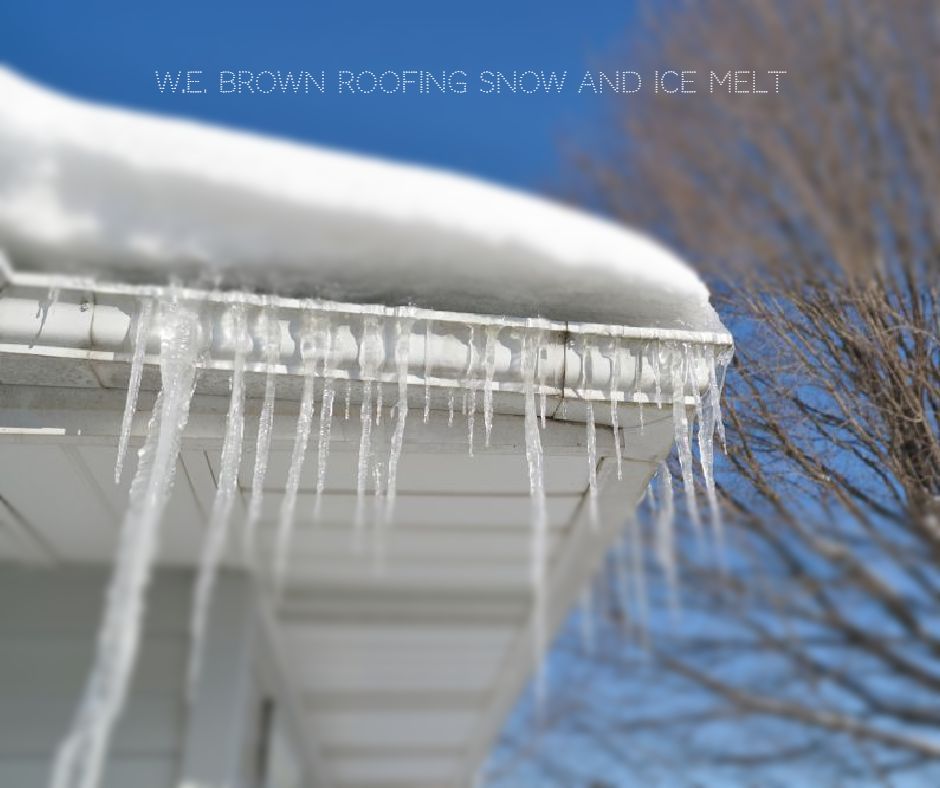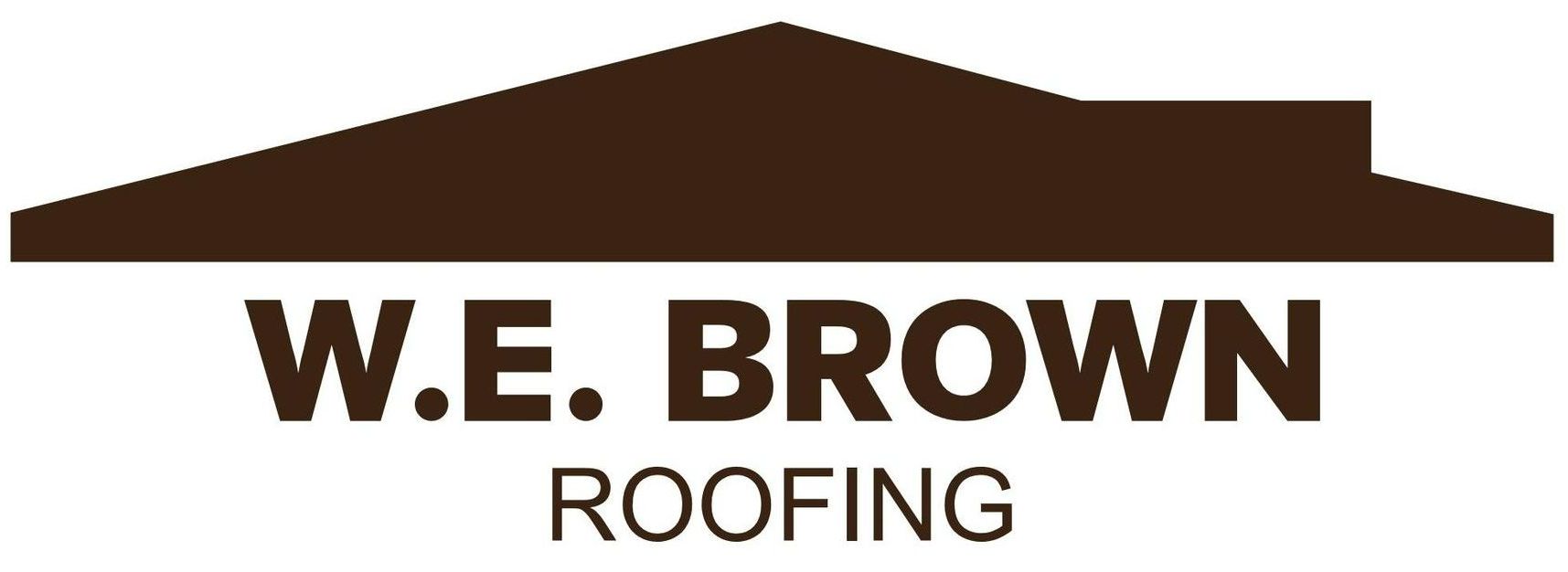178 Harold Dow Hwy Eliot, ME 03903
Blog Layout
Roof Leaks: Identification, Prevention, and Maintenance
W E Brown • January 10, 2025
How to Detect, Prevent, and Maintain Your Roof to Avoid Costly Repairs
Roof Leaks: Identification, Prevention, and Maintenance
Roof leaks can be a major concern for homeowners, as they can lead to significant structural damage and costly repairs. This blog post will guide you through identifying a leaking roof, common causes of leaks, steps to stop the leak, and tips for future maintenance. Additionally, we'll discuss finding a professional roofer, understanding your warranty coverage, avoiding DIY mistakes, and assessing structural damage.
Identifying a Leaking Roof
Common signs of a leaking roof include water stains on walls or ceilings, mold growth, peeling paint, and damp insulation. If you notice any of these signs, inspect your attic and roof for visible leaks, paying close attention to areas around vents, chimneys, and skylights.
Common Causes of Leaks
1. Damaged or Missing Shingles: High winds or aging can compromise shingles.
2. Clogged Gutters: Water pooling from blocked gutters can seep into the roof.
3. Flashing Issues: Improperly sealed flashing around vents, chimneys, or skylights can let water in.
4. Poor Installation: Faulty roofing installation often leads to premature leaks.
5. Age of the Roof: Over time, materials deteriorate, making leaks more likely.
6. Ice dams and snow accumulation: Snow buildup and ice dams can force water under shingles and into your home, particularly during freeze-thaw cycles.
7. Cracked or damaged vent pipes: Roof vents can crack or become damaged over time, creating an entry point for water.
Steps to Stop the Leak
1. Contain the water: Place a bucket under the leak to catch the water and prevent further damage.
2. Clear gutters and downspouts: Remove debris from gutters and downspouts to allow proper water drainage.
Finding a Professional Roofer
Hiring a professional roofer like W.E. Brown Roofing is crucial for long-term solutions and proper repairs. Seek recommendations from friends, family, or online reviews. Verify the roofer's credentials, insurance, and licensing before hiring them for the job.
Understanding Your Warranty Coverage
Review your roofing warranty to determine the coverage for repairs and replacements. Some warranties cover materials only, while others include labor. Ensure you understand your coverage before proceeding with repairs.
Avoiding DIY Mistakes
DIY roof repairs like roofing tape and rubber cement can lead to further damage and void your warranty. It's best to leave roof repairs to the professionals to ensure proper installation and avoid costly mistakes.
Assessing Structural Damage
After the leak has been fixed, assess any structural damage to your home, including walls, ceilings, insulation, and framing. If necessary, consult a professional contractor for repairs.
Preparing for Future Maintenance
Regular roof maintenance is key to preventing future leaks. Inspect your roof at least twice a year, clean gutters and downspouts, and ensure proper ventilation to prevent moisture buildup.
By following these tips, you'll be better equipped to identify and address roof leaks, ensuring the longevity and integrity of your home. Remember that prevention and proper maintenance can save you time, money, and headaches in the long run.

By W E Brown
•
March 21, 2025
Home Show season is just around the corner! It’s the perfect time to explore the latest trends and gather inspiration to kickstart your home improvement projects. Whether you’re a seasoned renovator or just starting to dream, these tips will help you make the most of your Home Show visit: Define Your Goals What’s the main thing you’re hoping to achieve? Are you focused on improving a specific area of your home, finding fresh design ideas, creating a more sustainable living space, or planning for your future comfort? Being clear about your goals can help you stay focused and make your experience more rewarding. Do Your Homework on Exhibitors Before you go, take a look at the Home Show’s website to see the list of exhibitors. Many vendors share links, photos, or videos showcasing their work. Spend a little time researching the ones that catch your eye and prepare a list of questions. This way, you’ll be ready to dive straight into meaningful conversations during the expo. Plan Your Schedule Wisely Does the Home Show feature workshops, presentations, or special events? These can be incredible opportunities to learn and get inspired. Reserve some time to explore these offerings, and be sure to leave a few moments afterward to reflect on what you’ve learned. Be on the Lookout for Deals and Discounts Home Shows are great places to score exclusive discounts and offers. Many exhibitors provide attendee-only deals that aren’t advertised elsewhere. Don’t hesitate to chat with vendors—you could end up saving big on your next project. Leverage Technology Embrace tools like virtual and augmented reality to bring your ideas to life. For instance, W.E. Brown Roofing offers an easy-to-use roofing visualizer, which they’ll be showcasing at this year’s event. If you bring a photo of your home, you’ll be able to explore roofing options in real time. It’s like seeing your dreams in 3D! You can also try this visualizer online anytime. Optimize for Comfort and Organization A Home Show can be an all-day affair, so dress for comfort—think sturdy shoes for all that walking and standing. Bring a tote bag to collect brochures and samples (not all vendors provide them). A notebook or your phone’s notes app is handy for jotting down ideas, and don’t forget to snap photos of booths or displays that spark your interest.

March 11, 2025
As the snow melts, it's the perfect time to give your roof some TLC. Follow this checklist to ensure your roof remains in top shape and prevent future issues: 1. Inspect for Damage: • Shingles: Check for cracked, loose, or missing shingles caused by winter weather. • Flashing: Examine metal flashing around chimneys, vents, and skylights for gaps or rust. • Gutters & Downspouts: Ensure they are securely attached and damage-free. 2. Clear Debris: • Remove accumulated leaves, branches, and debris to prevent water buildup. • Clean gutters and downspouts for proper drainage. 3. Check for Leaks: • Inspect your attic for water stains, mold, or damp insulation—signs of a leaky roof. • Look for new water spots on your ceilings inside. 4. Evaluate Ice Dam Impact: • If you had ice dams, check for damage along eaves and potential attic ventilation issues. • Consider installing ice and water shields or improving insulation to prevent future ice dams. 5. Examine Roof Ventilation: • Ensure attic vents are debris-free to promote airflow and reduce moisture buildup. 6. Schedule a Professional Inspection (If Needed): • Contact W.E. Brown Roofing in Keene, NH for a thorough inspection and repairs if you notice any issues. By following this checklist, you can extend the life of your roof. Happy spring!

By W E Brown
•
February 21, 2025
Snow and Ice Melt on Your Roof: What Keene, NH Homeowners Need to Know As winter transitions to spring in Keene, NH, homeowners face a common issue: snow and ice melt on their roofs. While melting may seem like a natural process, improper drainage and ice buildup can lead to significant damage if not managed properly. Understanding how to prevent issues and protect your roof is crucial for maintaining your home’s integrity. The Dangers of Snow and Ice Melt on Your Roof 1. Ice Dams – When snow melts and refreezes at the edge of your roof, ice dams can form, preventing proper drainage. This leads to water backing up under shingles, potentially causing leaks and structural damage. 2. Excess Weight – Heavy snow and ice accumulation can put undue stress on your roof, increasing the risk of collapse or damage to roofing materials. 3. Leaks and Water Damage – As temperatures fluctuate, melting snow can seep into cracks or under shingles, leading to moisture damage, mold, and interior leaks. How to Prevent Roof Damage from Snow and Ice Melt • Ensure Proper Insulation and Ventilation – Keeping your attic well-insulated and ventilated helps regulate roof temperature, reducing the chances of ice dams forming. • Clear Snow Buildup – Using a roof rake to remove excess snow can prevent ice dams and minimize weight on your roof. • Check for Gutter Blockages – Ice and debris in your gutters can prevent water from draining, leading to potential leaks and damage. • Install Ice and Water Shield – A protective underlayment beneath shingles helps prevent water infiltration if ice dams form. • Schedule Regular Roof Inspections – A professional inspection can identify potential weaknesses and ensure your roof is in top condition before problems arise. Trust W.E. Brown Roofing for Roof Maintenance and Repairs At W.E. Brown Roofing, we understand the challenges that Keene, NH homeowners face during the winter months. Our team specializes in roof maintenance, repairs, and preventative solutions to help protect your home from snow and ice-related damage. Whether you need an inspection, ice dam removal, or new roofing materials, we’ve got you covered. Don’t wait until a minor issue turns into a costly repair! Contact W.E. Brown Roofing today for expert roofing services and winter protection.

By W E Brown
•
February 7, 2025
It's nomination time again for the area's "Best Of" contests, sponsored by The Sentinel, and the Monadnock Shopper News in Keene, NH. As W.E. Brown Roofing seeks nominations for Best Roofing Company, let's explore how these contests help local businesses and our community. Strengthening Our Community: The Impact of Voting in "Best of Keene" Contests Annual "Best Of" contests offer an exciting chance for Keene residents to support their favorite local businesses. Your vote not only celebrates these establishments but also contributes to the growth and success of our town in various ways. Showcasing Keene's Gems: Our town boasts a diverse array of businesses, including charming cafés, family-owned shops, and skilled service providers. By voting, you help shine a spotlight on these local gems, giving them the recognition they deserve. Boosting Local Businesses: A "Best Of" title enhances a business's visibility and credibility, attracting new customers and fostering growth. Your vote empowers small businesses in Keene to thrive amid competition from chains and online retailers. Investing in Our Community: Supporting Keene businesses keeps money in our local economy, driving job creation and stronger wages. An engaged community benefits everyone, and your vote is an investment in our collective success. Encouraging Excellence: Seeing the community vote for their favorites inspires businesses to innovate, improve services, and give back to customers. This friendly competition elevates local standards and experiences for all. Celebrating Our Town: Keene's unique charm is undeniable, and voting in "Best Of" contests fosters community pride. By recognizing our finest businesses, we celebrate what makes Keene an amazing place to live. How You Can Support Keene: • Vote and spread, the Word: Participate in contests and encourage others to join in. • Leave Reviews and Share Online: Boost business visibility with positive reviews and social media shout-outs. • Choose Local Year-Round: Consistently shop, dine, and hire locally to invest in our community's success. Our local businesses are the backbone of Keene's charm and economy. Your vote in "Best Of" contests is a simple yet powerful way to show appreciation and contribute to our town's future. So, let's get voting and celebrate the businesses that make Keene shine!
By W E Brown
•
January 24, 2025
Why You Should Really Pay Attention to Your Insurance Company's Roof Repair Letter
By W E Brown
•
December 30, 2024
Winter Roof Maintenance Tips for Asphalt Shingle Roofs Asphalt shingle roofs are a popular choice for homeowners due to their affordability and versatility. However, proper maintenance is essential to keep your roof in top shape, especially during winter months. New Hampshire winters can be harsh, with heavy snowfall and freezing temperatures posing unique challenges for your roof. This blog post will cover essential tips for maintaining your asphalt shingle roof during the winter season. Snow Removal Excessive snow buildup on your roof can cause structural damage or lead to ice dam formation. Use a roof rake to remove heavy snow, but exercise caution to avoid damaging the shingles. It's also crucial to avoid walking on a snow-covered roof, as it can be dangerous and may damage the shingles. If you're dealing with heavy snowfalls, consider hiring W.E. Brown Roofing for roof snow removal services to ensure safe and effective snow removal. Ice Dam Prevention Ice dams form when melting snow refreezes at the roof's edge, causing water to pool and potentially leak into your home. To prevent ice dams: 1. Ensure adequate attic ventilation to allow warm, moist air to escape, reducing the risk of ice dam formation. 2. Maintain proper insulation in the attic to prevent heat loss from the living space, which can contribute to ice dam formation. 3. In some cases, installing heat tape along the eaves can help melt snow and prevent ice dams from forming. Regular Inspections Perform regular visual inspections from the ground to check for signs of damage, such as cracked, missing, or curling shingles. Additionally, schedule a professional roof inspection with W.E. Brown Roofing in the spring to assess for any winter-related damage that may not be visible from the ground. By following these winter-specific maintenance tips, you can ensure your asphalt roof remains in good condition throughout the winter season and reduce the risk of damage caused by snow, ice, and freezing temperatures. Proper winter care will extend your roof's lifespan and protect your home from costly repairs.
Content, including images, displayed on this website is protected by copyright laws. Downloading, republication, retransmission or reproduction of content on this website is strictly prohibited. Terms of Use
| Privacy Policy




